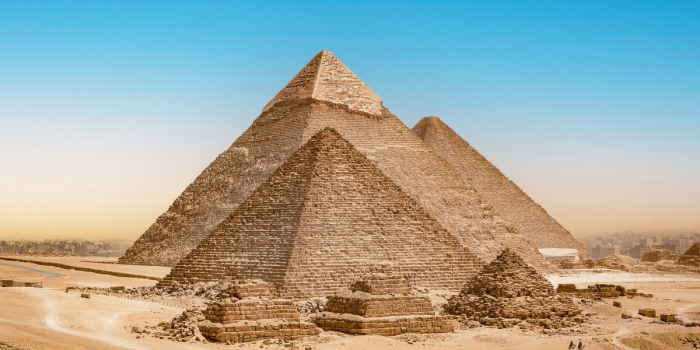Ground-penetrating radar (GPR) has transformed archeology, allowing researchers to explore beneath the surface without excavation. This technique has uncovered Viking longships in Norway, lost civilizations in the Amazon, and entire Roman cities. Recently, GPR has once again proven its value, this time near the Great Pyramids of Giza, one of the most thoroughly excavated sites in the world.
Using electrical resistivity tomography (ERT) and ground penetrating radar (GPR), a multinational team under the direction of Motoyuki Sato of Tohoku University has found an “L-shaped anomaly” in the western cemetery close to the Great Pyramids. This recently discovered structure, 33 feet long and around 6.5 feet below the surface, was found to have been backfilled after it was constructed.

The research article published in the Archaeological Prospection journal states, “High-class officers and members of the royal family are known to be buried in the Western Cemetery at Giza.” The precise structure and position of the anomaly were initially unknown; however, the GPR and ERT surveys detected it in the northern portion of the site.
Another anomaly, characterized as “highly electrically resistive,” is located 16 to 33 feet below the surface of this L-shaped formation. The researchers put forth two primary explanations for this anomaly: “sparse spacing with air voids” or a combination of gravel and sand. Although the surrounding terrain was dotted with mastaba or flat-roofed tombs, this specific sand stretch had not been fully excavated since no notable surface structures existed.

Speaking to Live Science, Sato suggested that the sharp shape of the anomaly indicates it is likely man-made. “It may have been an entrance to the deeper structure,” Sato and his colleagues noted. They hypothesize that this deeper structure could be a tomb.
“We believe that the continuity of the shallow and deep large structures is important. We cannot determine the material causing the anomaly from the survey results, but it may be a large subsurface archaeological structure.”
The scientific team plans to begin excavation shortly, which will be necessary to determine what is underneath the sand. This discovery could reveal structures that have been hidden for thousands of years, providing new perspectives on the history and archaeology of the Giza plateau.


